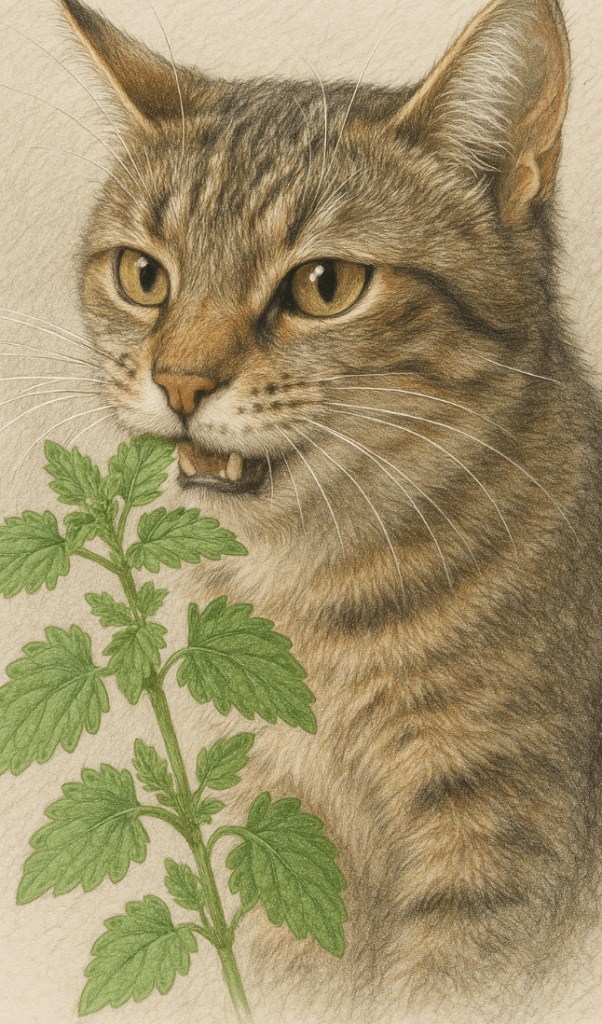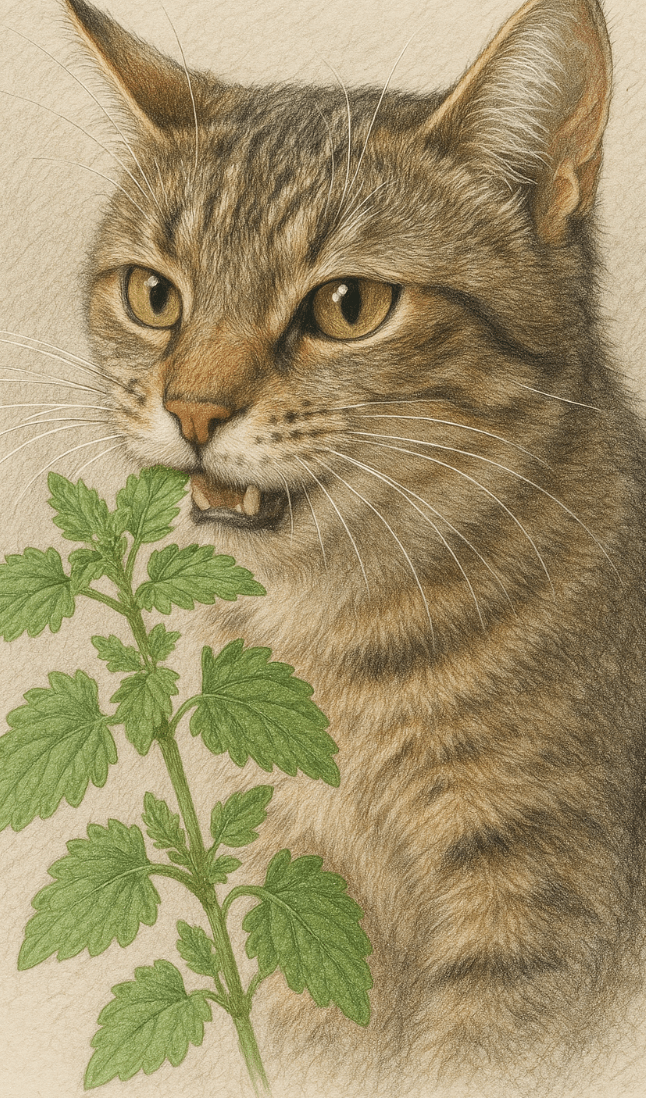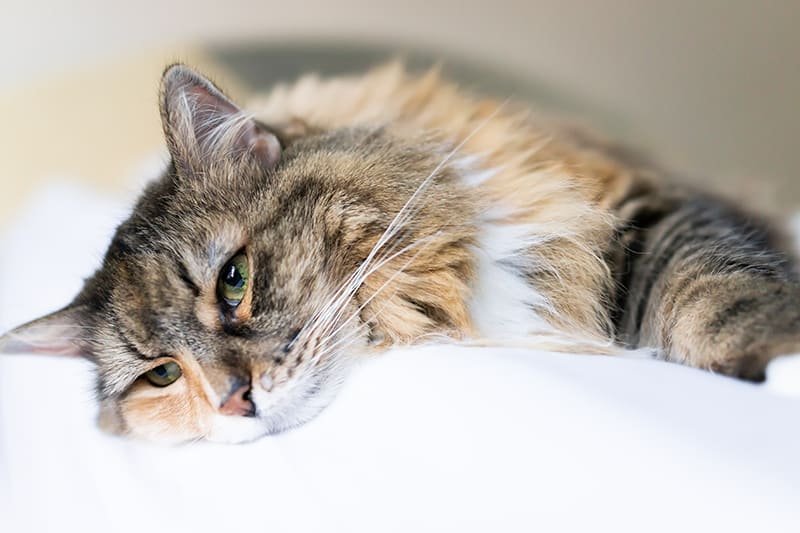Can Cats Eat Catnip? Everything You Need to Know
Catnip, a member of the mint family, is well-known for its fascinating effects on cats. Many pet owners wonder whether it’s safe for their feline friends to consume and how it might impact their behavior. While catnip is generally considered harmless, understanding its uses, benefits, and potential risks is essential for ensuring your cat’s safety and well-being. In this blog post, we’ll explore everything from what catnip is to how it affects cats, along with tips for using it responsibly. Whether you’re a seasoned cat owner or new to the world of feline care, this guide will help you make informed decisions about introducing catnip to your furry companion.
What Is Catnip and How Does It Affect Cats?
Catnip, scientifically known as Nepeta cataria, contains a compound called nepetalactone, which triggers a range of reactions in cats. Here’s what happens when your cat encounters catnip and why it has such a strong effect.
Behavioral Changes:
When exposed to catnip, many cats exhibit playful, energetic, or even euphoric behavior, including rolling, rubbing, and purring.Scent Activation:
The active ingredient, nepetalactone, binds to receptors in a cat’s nasal tissue, stimulating sensory neurons leading to the brain.Genetic Influence:
Not all cats are affected by catnip—responsiveness is hereditary, and about 50-70% of cats have the genetic trait that makes them react to it.Temporary Effects:
The “catnip high” typically lasts 10-15 minutes before wearing off, after which cats become temporarily immune to its effects.Non-Toxic Nature:
Catnip is non-toxic and poses no long-term health risks, making it a safe option for most cats.
Understanding these effects helps explain why catnip is so popular among cats and how it can be used safely in moderation.
Benefits of Giving Your Cat Catnip
When used responsibly, catnip can offer several benefits for your cat’s physical and mental well-being. Here’s how incorporating catnip into your cat’s routine can enhance their quality of life.
Encourages Exercise:
Catnip can stimulate playfulness, helping indoor cats stay active and reducing the risk of obesity.Reduces Stress and Anxiety:
The calming effects of catnip can soothe anxious cats, especially during stressful situations like vet visits or travel.Promotes Mental Stimulation:
Engaging with catnip-infused toys or treats provides mental enrichment, preventing boredom and destructive behaviors.Aids in Training:
Using catnip as a reward can encourage positive behaviors, such as using a scratching post instead of furniture.Supports Appetite:
For picky eaters, sprinkling a small amount of catnip on food can entice them to eat more regularly.
These benefits make catnip a versatile tool for enhancing your cat’s happiness and overall health.
Check this guide 👉Can Cats Eat Rice? Best 7 Expert Tips!
Check this guide 👉Can Cats Eat Begonias? Best 7 Expert Tips!
Check this guide 👉Can Cats Eat Philodendron? Best 7 Expert Tips!

Safe Ways to Use Catnip | Potential Risks of Overuse |
|---|---|
Sprinkle dried catnip on toys | Overconsumption may cause vomiting |
Use catnip-infused scratching posts | Excessive exposure can lead to fatigue |
Offer fresh catnip leaves occasionally | Some cats may become overly aggressive |
Mix catnip with treats in moderation | Prolonged use may reduce effectiveness |
Introduce catnip during playtime | Kittens under 6 months may not respond |
How to Introduce Catnip Safely
Introducing catnip to your cat requires careful consideration to ensure their safety and enjoyment. Follow these guidelines to create a positive experience.
Start Small:
Begin with a tiny amount of dried catnip or a fresh leaf to gauge your cat’s reaction before offering more.Observe Their Response:
Watch for signs of excitement, relaxation, or disinterest to determine if your cat enjoys catnip.Use High-Quality Products:
Choose organic, pesticide-free catnip to avoid exposing your cat to harmful chemicals.Limit Frequency:
Avoid giving catnip daily to prevent overstimulation or diminishing returns over time.Supervise Playtime:
Ensure your cat doesn’t ingest large quantities of catnip or chew on unsafe materials while playing.
By following these steps, you can maximize the benefits of catnip while minimizing any potential downsides.
Signs Your Cat May Have Had Too Much Catnip
While catnip is generally safe, excessive consumption or exposure can lead to undesirable side effects. Look out for these warning signs if you suspect your cat has had too much.
Vomiting or Diarrhea:
Eating large amounts of catnip can upset your cat’s stomach, resulting in digestive issues.Lethargy or Fatigue:
Overstimulation may leave your cat feeling exhausted or uninterested in activities.Aggressive Behavior:
Some cats may become overly excited or territorial after consuming too much catnip.Loss of Coordination:
Excessive exposure can temporarily impair balance and motor skills, similar to intoxication.Decreased Responsiveness:
If your cat seems unusually dazed or unresponsive, they may need a break from catnip.
Recognizing these signs allows you to take action quickly and adjust how you use catnip moving forward.
Common Misconceptions About Catnip
Despite its popularity, several myths surround catnip and its effects on cats. Clearing up these misconceptions ensures you use it responsibly and effectively.
Catnip Makes Cats “High”:
While cats may appear euphoric, the effects are natural and not comparable to drug-induced highs.All Cats Love Catnip:
Only cats with the genetic predisposition to respond to nepetalactone will show interest.Catnip Is Addictive:
Unlike drugs, catnip doesn’t cause addiction or dependency in cats.Fresh Catnip Is Always Better:
Both fresh and dried catnip are equally effective; preference depends on the individual cat.Catnip Works Instantly Every Time:
Repeated exposure can desensitize cats temporarily, requiring breaks between uses.
Dispelling these myths helps you better understand and utilize catnip for your cat’s benefit.
Creative Ways to Incorporate Catnip into Playtime
Catnip can be used creatively to enhance your cat’s playtime and keep them entertained. These ideas provide inspiration for making the most of this versatile herb.
DIY Catnip Toys:
Stuff socks or fabric scraps with dried catnip to create homemade toys your cat will love.Interactive Games:
Hide catnip-scented objects around the house to encourage exploration and hunting instincts.Reward System:
Use catnip as a reward during training sessions to reinforce positive behaviors.Scratching Post Attraction:
Rub catnip on scratching posts to redirect unwanted scratching away from furniture.Outdoor Adventures:
Bring a catnip toy along during supervised outdoor excursions to boost confidence and engagement.
These creative uses add variety to your cat’s routine while maximizing the benefits of catnip.
Alternatives to Catnip for Feline Enrichment
If your cat doesn’t respond to catnip or you’d like to explore other options, there are plenty of alternatives that offer similar benefits.
Silver Vine:
Known as a stronger alternative to catnip, silver vine elicits similar responses in most cats.Valerian Root:
This herb has a pungent smell but can induce playful or relaxed behavior in cats.Tatarian Honeysuckle:
Often enjoyed by cats who don’t react to catnip, honeysuckle wood is a great substitute.Interactive Toys:
Puzzle feeders, laser pointers, and feather wands provide mental and physical stimulation without herbs.Herbal Blends:
Commercial blends combine catnip with other herbs like lemon balm or chamomile for varied effects.
Exploring these alternatives ensures your cat stays engaged and entertained, regardless of their response to catnip.
Frequently Asked Questions About Cats and Catnip
Is catnip safe for kittens?
Kittens under 6 months old typically don’t respond to catnip and should avoid it until they’re older.
Can all cats enjoy catnip?
No, sensitivity to catnip is genetic, and some cats won’t show any interest in it.
How often can I give my cat catnip?
Limit catnip sessions to once or twice a week to maintain its novelty and effectiveness.
What forms of catnip are available?
Catnip comes in dried form, fresh leaves, sprays, and infused toys or treats.
Does catnip work on other animals?
While primarily effective on cats, some larger felines (like lions) may also react to catnip.
Making the Most of Catnip for Your Feline Friend
Catnip is a wonderful addition to your cat’s life when used thoughtfully and in moderation. Its ability to entertain, relax, and stimulate makes it a valuable tool for enhancing your cat’s well-being. By understanding how catnip works, recognizing its benefits, and being mindful of potential risks, you can create a safe and enjoyable experience for your furry companion. Remember, every cat is unique, so tailor your approach based on their preferences and needs. With proper care and attention, catnip can become a cherished part of your cat’s routine, bringing joy and enrichment to both of your lives.
Is the Rubber Tree Cat Safe? Best 7 Expert Tips! Discover expert advice on keeping rubber plants safely in cat-friendly homes and learn top tips for pet-safe plant care.
Low Red Blood Cell Count in Cats: Best 7 Expert Tips! Discover causes, symptoms, and treatment options for feline anemia. Learn how to support your cat’s health effectively with expert advice.
Understanding Megacolon Treatment: Best 7 Expert Tips! Discover effective strategies to manage feline megacolon, from dietary changes to surgical options, ensuring your cat’s comfort and long-term health.
How to Register a Therapy Cat: Best 7 Expert Tips! Discover essential steps to certify your cat as a therapy animal, prepare them for training, and make a meaningful impact in therapeutic settings.





